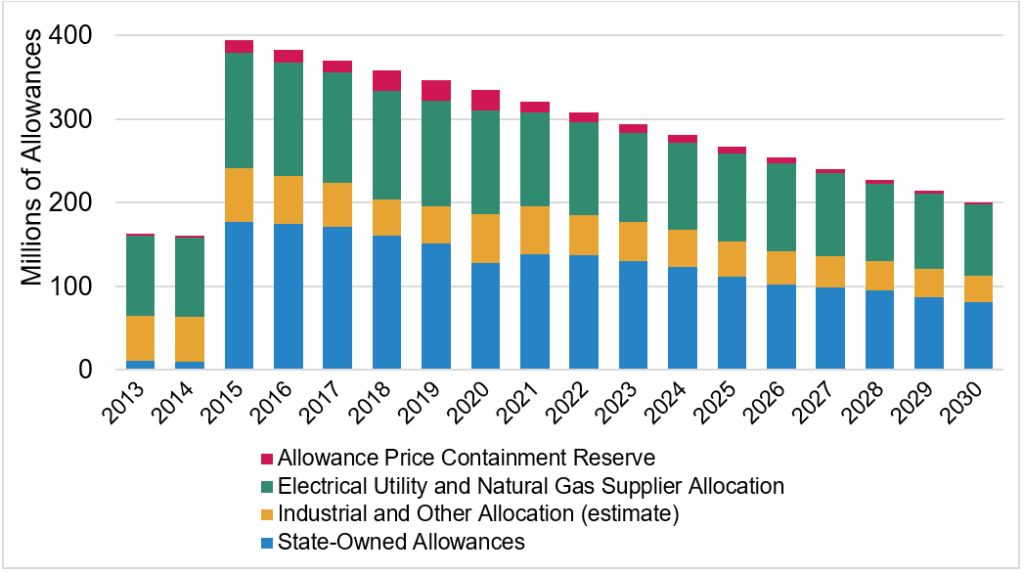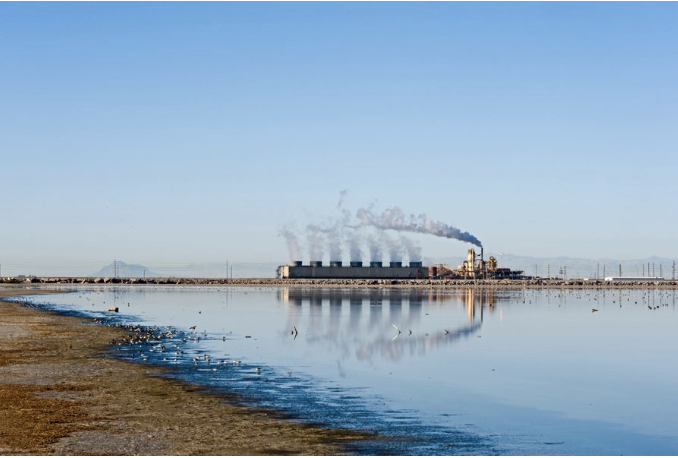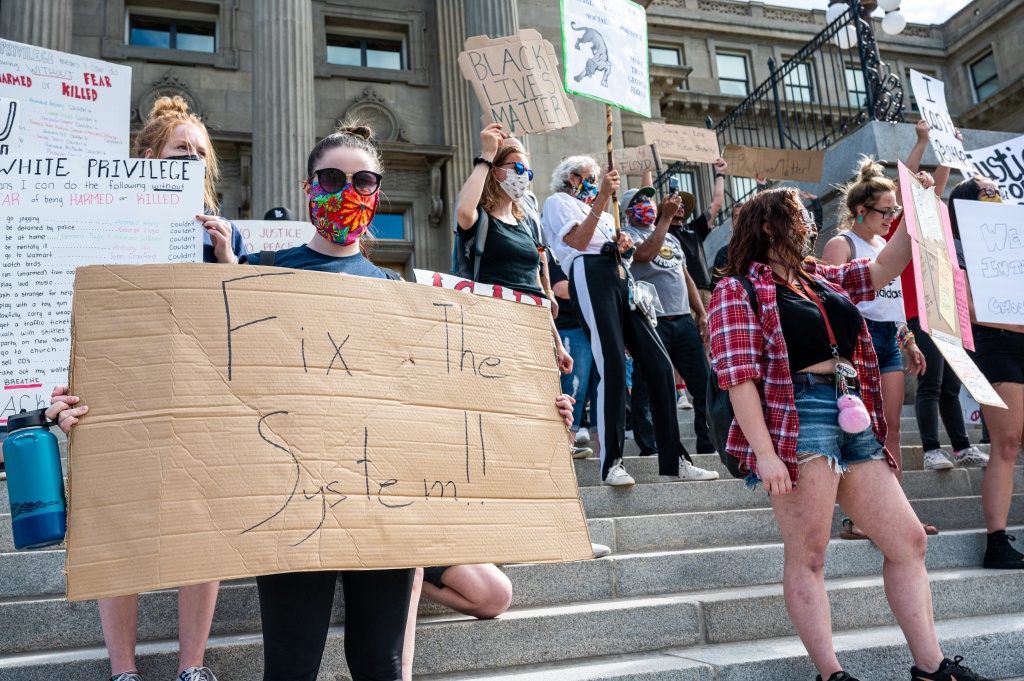Investing in Communities, Not Polluters: Reforming Cap-and-Trade to Deliver

As California prepares to reauthorize its cap-and-trade program, Legislators face a critical opportunity – and responsibility – to get it right. This policy is not just about carbon markets or regulatory compliance; it has real, lasting consequences for the communities hit hardest by pollution and climate change – low-income communities of color.
The decisions made now will shape California’s climate future for the next 20 years – a period during which equitable climate action is more urgent than ever. With federal climate protections under attack and progress slowing nationally, California has a chance to lead – not by preserving a flawed program, but by addressing long-standing deficiencies and seizing opportunities to make the program work for the frontline communities most at risk of being left behind.
The Greenlining Institute, in coalition with partners across the state, is advancing equity-centered reforms to cap-and-trade to better serve California’s climate, equity, and affordability goals. Read on to learn why these changes are essential – and what we’re asking Legislators to include in the next phase of cap-and-trade.
What is Cap-and-Trade and Why Does It Matter?
California’s Cap-and-Trade Program operates by setting a statewide limit – or cap – on greenhouse gas emissions from major industrial sectors, including power generation, manufacturing, and oil and gas extraction and refining. This cap is enforced by requiring industries to obtain emissions allowances, which can be thought of as permits to pollute. One emissions allowance represents one metric ton of CO₂ equivalent in GHG pollution. The cap – and accordingly, the total number of allowances that are available in the program – declines year by year.

The total pool of available allowances is divided into several categories:
- Allowances set aside in reserves to help stabilize the market and prevent excessive price volatility.
- Allowances given away for free to utilities, which largely pass on this value to assist ratepayers via utility bill credits.
- Allowances given away for free to certain industries to reduce the risk of “carbon leakage,” or the potential relocation of operations outside the state.
- Allowances sold at auction. After setting aside allowances for reserves, utilities, and industries, the rest are sold at auction, with revenues going into the Greenhouse Gas Reduction Fund to fund projects that produce climate, health, and economic benefits.
Revenue generated by cap-and-trade auctions is compiled into the Greenhouse Gas Reduction Fund. Each year, funds from the GGRF are allocated to programs intended to create climate, economic, and health benefits.
Cap-and-Trade and Environmental Justice
The facilities regulated by cap-and-trade are not located randomly throughout the state. They are three times more likely to be located in or near disadvantaged communities or communities of color, exposing these places to disproportionate levels of pollution. The Office of Environmental Health Hazard Assessment has found that “Black Californians, in particular, experience twice the PM2.5 exposure from facilities covered by the Cap-and-Trade Program than White Californians do.”
Low-income communities of color have long borne the brunt of these environmental impacts across California – the result of decades of inequitable policies like redlining that led to these communities being targeted for the construction of highways, oil refineries, and industrial centers. While air quality improvements have been seen across the state over the last two decades, the racial and socioeconomic disparities in exposure and health outcomes remain persistent.
For historically pollution-burdened communities, challenges have only deepened in recent years. Climate change has intensified heat waves and wildfire risks. Rising utility bills and living costs have compounded affordability concerns. And chronic disinvestment continues to undermine economic opportunities.
As California approaches cap-and-trade reauthorization, it is critical that the program not only reduce GHG emissions at the state level, but also deliver verifiable reductions in local pollution and targeted investments in clean transportation, clean energy, and climate resiliency for the communities that have been historically and disproportionately harmed.
A Better Cap-and-Trade Program is Within Reach
Below we outline several key reforms needed to ensure the cap-and-trade program benefits all Californians – especially those who bear the greatest pollution impacts.
1. Eliminate Free Allowances for the Oil and Gas Industry
One of the program’s most flawed features is the practice of giving away a significant share of emissions allowances for free – especially to the oil and gas sector.
“Free allowances” were initially justified as a way to prevent “carbon leakage” – the idea that to avoid complying with emissions reductions requirements, companies might relocate operations to other states with more lax regulations, thereby undermining broader greenhouse gas reduction goals. But in practice, this policy has become a major loophole that benefits some of the most carbon-intensive industries.
When cap-and-trade was reauthorized in 2017 through Assembly Bill 398 (E. Garcia), the Legislature set the “industry assistance factor” at 100% for all sectors. This factor is a key part of the formula used to calculate how many free allowances industries receive and is intended to reflect each industry’s risk of carbon leakage. However, by setting the percentage at the maximum level across the board, regardless of actual leakage risk, the policy ensured that even the most profitable and polluting industries, including oil and gas, would continue receiving substantial free pollution credits. This approach undermines the core goal of cap-and-trade: driving meaningful reductions in greenhouse gas emissions.
Since 2017, it is estimated that the state has given away $4.3 billion to oil refiners in free allowances. In 2024, approximately $890 million worth of free allowances was given away to the oil and gas industry. These represent credits that industries would have otherwise had to purchase through public auctions, which would have been deposited into the Greenhouse Gas Reduction Fund.
Why This Matters
These free allowances are problematic for several reasons:
- They delay real pollution cuts. Free allowances reduce the incentive for polluters to clean up their operations or upgrade technology. This prolongs toxic outputs in heavily polluting facilities, often located in low-income communities of color already burdened by health and environmental harms.
- They divert critical climate funding. Every allowance given out for free is one less purchased at auction – reducing proceeds that would otherwise go to the Greenhouse Gas Reduction Fund, which supports investments in clean transportation, building decarbonization, improving toxic air quality in environmental justice communities, and preparing the state for a just transition into a clean energy economy.
- And significantly: Free allowances for oil and gas do not directly benefit consumers. Unlike regulated electric and natural gas utilities, which also receive free allowances but are legally required to pass on the value of their free allowances through utility bill credits known as the California Climate Credit, oil and gas companies face no such obligation. These giveaways come with no strings – no requirements to show that any benefits (costs or otherwise) are tangibly reaching consumers instead of increasing profits for industries.
Oil and Gas Industries Reaped Record Profits, With No Accountability
California’s generous subsidies to oil and gas have existed for years while the industry has historically reaped record revenues. In 2022, companies like Chevron and Exxon posted their highest earnings in more than a decade – bringing in tens of billions while externalizing health and climate costs onto the public, and providing no relief to consumers affected by spikes in fuel prices during the same period. Governor Gavin Newsom called out the industry then for price gouging consumers and “fleecing California families,” particularly low- and middle-income households most affected by price hikes.
Despite these years of record profits, the oil and gas sector has received billions in free allowances under cap-and-trade since its inception – and is poised to continue doing so for decades to come unless the program is reformed to ensure they pay their fair share.
The Need for a Just Transition
There are rising concerns that holding oil and gas companies accountable for their pollution could lead to refinery closures, job losses, or higher fuel prices. It is true that several refineries – such as those owned by Phillips 66 and Valero – have announced or begun closures. But it is important to understand the broader context for this phenomenon.
- Refinery closures have been happening across the U.S. and globally – not because of environmental regulations like cap-and-trade – but due to long-term market forces: the global shift toward cleaner energy, shrinking fuel demand, and aging infrastructure. Even in states with limited climate policies, like Texas and Louisiana, refineries are closing or converting.
- Continuing to give away millions in free allowances to polluters not only undermines the logic of the cap-and-trade program – it also moves limited state resources towards the wrong places. Free allowances effectively subsidize an oil and gas industry in structural decline – an industry that has spent decades profiting at the expense of public health and the environment. This approach diverts resources away from funding a proactive just transition.
- A truly just transition will require bold investment in decarbonizing our transportation, energy, and building sectors; in supporting workers moving out of fossil fuel jobs; in preparing for the escalating impacts of climate change; and in helping local economies that have long depended on oil and gas tax revenue to diversify and thrive. The need for climate investments – and for directing them to the right places – has never been more urgent.
Recent draft bill language has shown significant anticipated concessions to the oil and gas industries already, including an expansion in drilling and in-state production.
When it comes to how these industries must comply under cap-and-trade, it’s time to make polluters pay their fair share, which they have skirted for over a decade. We can then direct these funds to the communities who have been historically harmed, and toward solutions that will get us toward a livable future.
The Path Forward
Instead of continuing to subsidize pollution, California should:
- End the allocation of free allowances to the oil and gas sector. The Legislature could start by giving CARB the authority to update the industry assistance factor that determines the number of free allowances given away to industries, and facilitate a ramp-down over time.
- Redirect the value of these allowances to the Greenhouse Gas Reduction Fund, where they can support programs that advance clean energy, climate resilience, air pollution reduction, career transition training for displaced workers, and many other investments needed for a just transition toward a clean energy economy.
2. Eliminate Offsets Program
California’s Cap-and-Trade Program currently allows regulated entities to meet up to 4% of their emissions reductions obligations by purchasing offset credits instead of allowances at auction. These offset credits fund projects that reduce or remove greenhouse gas emissions – for instance, forest management projects. Approximately two-thirds of offset credits support out-of-state projects, and approximately $140 million is spent on funding these projects each year.
There have been serious concerns about the effectiveness and environmental integrity of offsets for years. Recent academic research identified that “Most California offset credits do not represent real emissions reductions” due to several factors including:
- Excess crediting, or projects claiming more credits than actually achieved emission reductions
- Highly uncertain quantification methodologies
- Non-additionality, or projects that would have occurred regardless of the use of offset credits
- Non-permanence of projects funded by offsets, which may be lost to wildfire and growing climate-induced reversals of forest carbon storage
- Potential “leakage,” or timber production simply occurring elsewhere if offsets are used to fund forest management in one location
While regulated entities are currently allowed to meet up to 4% of their emissions reductions obligations using offset credits, that limit is slated to increase to 6% between 2026-2030, allowing the even greater use of offsets under the cap-and-trade program.
Given the well-documented deficiencies with carbon offsets, academics as well as the Independent Emissions Market Advisory Committee, which analyzes the performance of the state’s cap-and-trade program, have recommended possible alternatives to offsets. One such option includes ramping down the use of offsets in favor of utilizing allowance auctions as the primary compliance mechanism, and utilizing GGRF funds for in-state projects that advance nature-based solutions.
Instead of using offsets to fund hundreds of millions of dollars’ worth of potentially dubious carbon emissions reductions projects out of state, this approach prioritizes creating emissions reductions within the state and funding in-state projects. These in-state projects can be selected to advance the state’s existing Natural and Working Lands Strategy to deliver tangible, visible benefits – such as advancing climate-smart agriculture, improving forest management and ecosystem health, supporting priority initiatives of Tribal nations, and creating economic opportunities.
We support this approach of ramping down the use of offset credits and using GGRF revenues for tangible in-state projects that advance nature-based solutions.
3. Reform the CA Climate Credit to Prioritize Low-income Households
The California Climate Credit is a utility bill credit funded by the cap-and-trade program that is given to all ratepayers twice each year in April and October. Instead of continuing to disburse these funds as is, we urge the Legislature to prioritize the CA Climate Credit for low-income Californians, particularly those in hot climate zones who experience the highest utility cost burdens throughout the state. The Legislature should also direct the CPUC to disburse the credit during the peak usage months to assist with utility costs during those periods.
4. Fund Equity-Focused Programs via the GGRF
As part of the cap-and-trade reauthorization process, we are urging the Legislature to implement a GGRF spending plan that puts California’s most underserved communities front and center.
Earlier this year, Greenlining and over 80 additional organizations submitted a letter to request that the Legislature implement a GGRF spending plan that invests in disadvantaged communities – both urban and rural – addresses the climate crisis, and funds community-driven programs with strong, proven records of success.
Below is the list of programs that have been collectively uplifted by these 80-plus EJ and environmental groups. They include programs that advance decarbonization in housing and the built environment, transportation, and agriculture, while also addressing air and water quality, toxic pollution, green space access, and climate resilience in the places that most need these improvements.
The vast majority of these programs directly serve disadvantaged communities and create multiple benefits as well as cost-savings for households.
To that end, we urge the Legislature to fund these programs as part of the reauthorization of cap-and-trade.
| Programs (listed in alphabetical order) | Agency | Program Type |
| AB 617 Implementation | CARB | Air Quality |
| Affordable Housing and Sustainable Communities | Strategic Growth Council | Housing / Transportation |
| Clean Transportation Incentives | CARB/CEC | Transportation |
| Community Resilience Centers | Strategic Growth Council | Multi-benefit / Climate Resilience |
| Cleanup in Vulnerable Communities Initiative | DTSC | Multi-benefit |
| Displaced Oil and Gas Worker Fund (DOGWF) | EDD | Multi-benefit |
| Equitable Building Decarbonization | California Energy Commission | Energy |
| Low Carbon Transportation Operations Program | Caltrans | Transportation |
| SAFER Water Program | State Water Board | Water |
| Sustainable Agriculture Programs | Various | Agriculture |
| Transformative Climate Communities | Strategic Growth Council | Multi-benefit / Climate Resilience |
| Transit and Intercity Rail Capital Program | CalSTA/Caltrans | Transportation |
| Urban and Community Forestry | CalFIRE | Natural Resources |
| Urban Greening | CNRA | Natural Resources |
5. Address Air Quality and Localized Pollution
Environmental justice communities in California continue to experience disproportionate air quality impacts, which are further exacerbated by the overconcentration of facilities regulated by cap-and-trade in communities of color.
The 2017 reauthorization of cap-and-trade included companion air quality legislation (AB 617, C. Garcia) to advance air quality protections for disadvantaged communities. However, the promise of this bill has never been realized in many places. We encourage the Legislature to enact additional policies that protect these communities from the ongoing cumulative impacts of polluting industries.
We uplift the recommendations in this letter signed by numerous environmental justice organizations to advance AB 617 reforms alongside cap-and-trade reauthorization. These reforms include strengthening the enforceability of Community Emissions Reductions Plans; ensuring representatives from environmental justice communities have a seat at air district boards to inform decision-making; ensuring investment dollars associated with AB 617 go toward community-identified priorities; and regularly updating Best Available Control Technology / Best Available Retrofit Control Technology for stationary sources, among others.
A Just Reauthorization
California’s Cap-and-Trade Program has played a key role in reducing greenhouse gas emissions, but it’s clear the program is overdue for reforms that can deliver deeper benefits to the state’s most vulnerable communities.
A meaningful reauthorization must center the needs of frontline communities by ending free pollution allowances for the oil and gas industry, phasing out ineffective offsets in favor of real, measurable climate solutions, ensuring that auction revenues benefit those communities most in need, and addressing air quality concerns directly.
The state has the opportunity to chart the direction of climate policy for the next two decades. We urge the Legislature to do right: invest in communities, not polluters. Invest in a just transition, in clean energy, in clean air – the opportunity for all communities to not just endure the future, but truly thrive.




